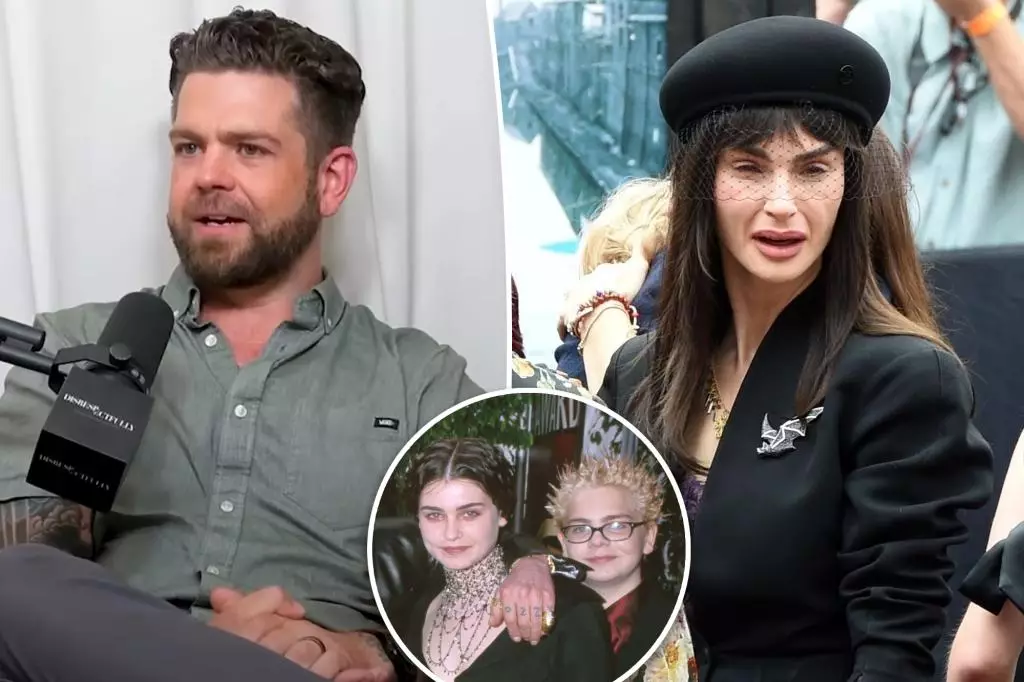In the realm of celebrity families, outward appearances often conceal profound emotional chasms. When Jack Osbourne openly admits that his relationship with his sister Aimee is strained, it invites an exploration of the unseen barriers that divide even those bound by blood. The Osbournes’ story exemplifies how personal choices, privacy, and individual identity can fracture familial bonds, regardless of shared history. Jack’s candid revelation underscores a harsh reality: proximity and shared experiences do not guarantee understanding or closeness. Instead, they sometimes amplify differences, leading to silent resentments and emotional distance that persist beneath the surface. Public narratives tend to romanticize family unity, yet this account reminds us that behind closed doors, many families grapple with unresolved conflicts, estrangements, and the toll they take on every member involved.
The Desire for Preservation of Autonomy and Privacy
Aimee Osbourne’s decision to steer clear of the public eye exemplifies a profound assertion of personal agency. Choosing privacy over fame isn’t merely about avoiding the spotlight; it’s an act of self-preservation and authenticity. Her rejection of “The Osbournes” and refusal to be seen as riding her family’s coattails speak to a desire to craft her own identity—one untainted by the reality TV image her family became famous for. This stance, while entirely valid, also inadvertently deepened her familial separation. It highlights a broader cultural tension: the struggle between the collective identity and personal liberty. Aimee’s withdrawal at such a young age underscores an intelligent, albeit painful, effort to maintain her mental health and individuality amidst a family that was under constant public scrutiny. Her choice demonstrates that sometimes, distance isn’t a sign of rejection but a necessary act for self-preservation.
The Complexity of Familial Regret and Unspoken Pain
Sharon Osbourne’s poignant admission of regret about letting Aimee leave at 16 reveals the nuanced, often conflicting nature of parental love and societal expectations. It exposes the pain that accompanies decisions driven by circumstances beyond individual control. Her lamentation suggests that despite understanding her daughter’s reasons, a maternal desire for closeness and stability persisted. This adds layers to the narrative: families are seldom perfect, and regrets ripple through generations. Kelly Osbourne’s frank acknowledgment of estrangement further illustrates that familial bonds are intricate, shaped by misunderstandings, personal differences, and unfulfilled expectations. These stories defy the popular notion that blood ties equate to harmony, illustrating instead that love and estrangement often coexist uneasily within families marked by fame and privacy.
Public Mourning and the Illusion of Family Unity
The rare reunion at Ozzy Osbourne’s funeral offers a poignant contrast to years of presumed discord. Siblings united, even momentarily, to honor their father signifies a resilient, if fragile, familial bond. The symbolic jewelry—Aimee’s bat brooch referencing Ozzy’s devil-may-care persona—serves as a gesture of tribute, blending personal legacy with familial history. Such public displays of mourning are layered with complexities—are they genuine reunions or calculated performances? Often, they serve as a reminder that familial love persists despite fractures, especially in moments of shared grief. The family’s collective effort to honor Ozzy amidst personal differences demonstrates that even deeply strained relationships can find common ground in the face of loss. It challenges the reader to consider whether grief has the power to heal, or simply temporarily bridge unresolved divides, before reality reasserts itself.
The Cultural Significance of Family in the Public Eye
The Osbournes’ saga invites us to reflect on how celebrity magnifies family dynamics, transforming private struggles into spectacles. Media exposure can both expose vulnerabilities and create barriers, making genuine reconciliation difficult amid relentless scrutiny. The family’s public narrative is curated, often masking deeper emotional realities. Yet, occasions like the funeral serve as visceral reminders that these public personas are also human beings—flawed, imperfect, and capable of complex emotions. Their story underscores the importance of authenticity in understanding familial relationships: behind the headlines and scripted moments lies a tapestry of love, regret, misunderstanding, and resilience. Ultimately, it forces us to confront the uncomfortable truth that family isn’t always about perfect harmony but about navigating enduring imperfections with courage and hope.
The Osborne family’s story acts as a mirror reflecting wider societal truths: the delicate balance between individuality and kinship, the pain of separation, and the persistent hope for reconciliation. It underscores that in the end, family is a profound mixture of love, disappointment, resilience, and the unspoken acknowledgment that some wounds require time—or maybe even a lifetime—to heal.

